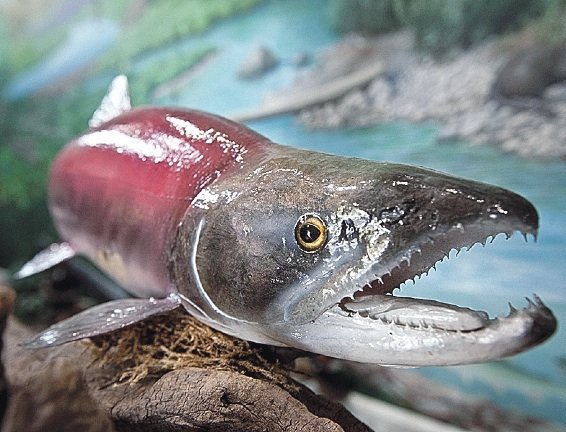forum
library
tutorial
contact

Why Pro-salmon Ruling on Dams
Could Be Bad for the Environment
by Terry Flores
The Oregonian, May 16, 2016
|
the film forum library tutorial contact |

|
Why Pro-salmon Ruling on Dams
by Terry Flores
|
 This month, U.S. District Judge Michael H. Simon ordered the government to once again overhaul its strategy for operating the Northwest's eight federal hydropower dams in a manner that lessens their impact on salmon. So-called fish advocates cheered, largely because Simon's ruling suggests that helping salmon recover may require further study of removing four dams on the Lower Snake River in Washington.
This month, U.S. District Judge Michael H. Simon ordered the government to once again overhaul its strategy for operating the Northwest's eight federal hydropower dams in a manner that lessens their impact on salmon. So-called fish advocates cheered, largely because Simon's ruling suggests that helping salmon recover may require further study of removing four dams on the Lower Snake River in Washington.
Along with four federal agencies, Northwest RiverPartners -- an alliance of farmers, trade groups, utilities, ports and other river users -- was on the losing side, so of course we're disappointed. The ruling returns our region to the hamster wheel of endless analysis and litigation. But anyone who cares about Oregon's renewable energy future should be worried, too.
For a judge whose ruling shows serious concerns about climate change, Simon is pointing the Northwest down a strange and unproductive road: ordering further study of an old idea that would diminish this region's biggest source of renewable energy -- hydropower.
In his May 4 ruling, Simon found flaws in the 2014 biological opinion, or BiOp, that is backed by three out of four Northwest states, nearly all of the region's tribes, National Oceanic and Atmospheric Administration Fisheries, the Bonneville Power Administration, the U.S. Army Corps of Engineers, the Bureau of Reclamation and numerous ports, utilities and other river users. Simon suggests dam removal as a potential solution to those flaws.
Yet if the judge is truly concerned about climate change, the last thing we should do to address it is start removing dams. Hydropower, although it rarely gets credit, remains the backbone of our region's clean energy system. The Lower Snake dams are a case in point: Together they produce enough clean energy to power a city the size of Seattle every year.
Hydropower enables our growing use of other renewables, too, by backing them up when the wind doesn't blow and the sun doesn't shine. If we cripple our hydro system, new Oregon and federal mandates to address climate change by increasing other renewables will be difficult if not impossible to achieve.
Nor is dam removal a silver bullet for helping the salmon. The Snake dams affect only four of the 13 species listed for protection under the Endangered Species Act. And only Congress can authorize and appropriate funds for dam removal, which makes it unlikely at best.
Federal agencies have already spent millions of dollars and many years studying dam removal -- and rejected it based on science that concluded removal might provide some benefits but would not be enough to recover the salmon. More study won't change reality, which is that dam removal alone cannot address or overcome the many factors that harm salmon throughout their life cycle -- ocean conditions, overharvest and poor hatchery practices among them.
We had hoped this judge would provide a viable path forward in the decades-old debate over dams and salmon. But by returning once again to the study of dam removal, Simon's ruling takes us back to square one.
learn more on topics covered in the film
see the video
read the script
learn the songs
discussion forum
